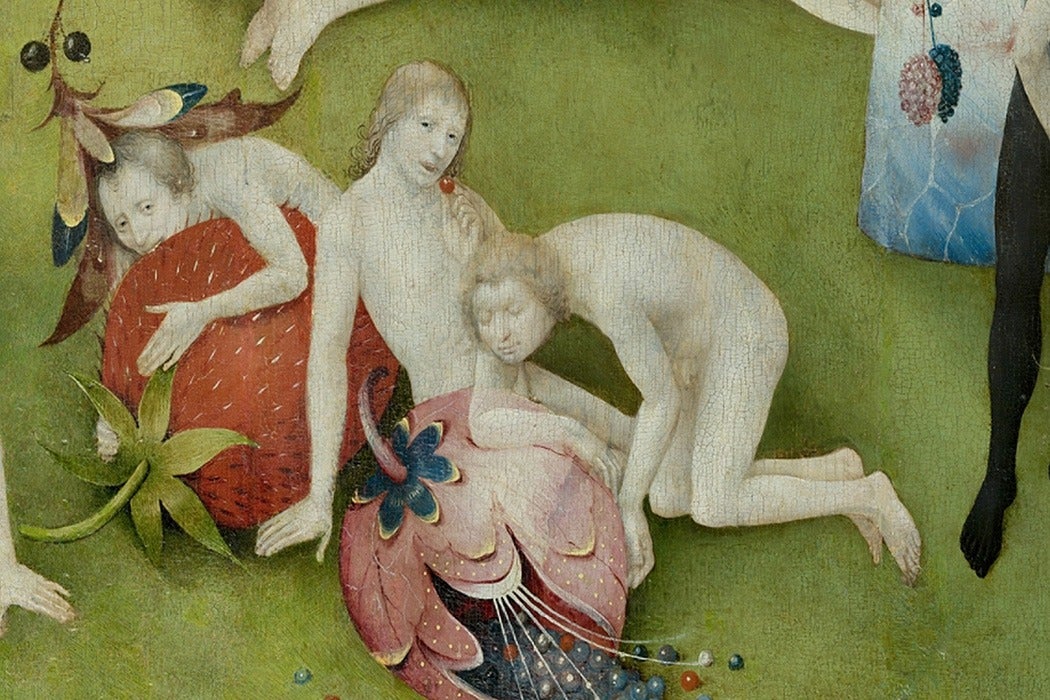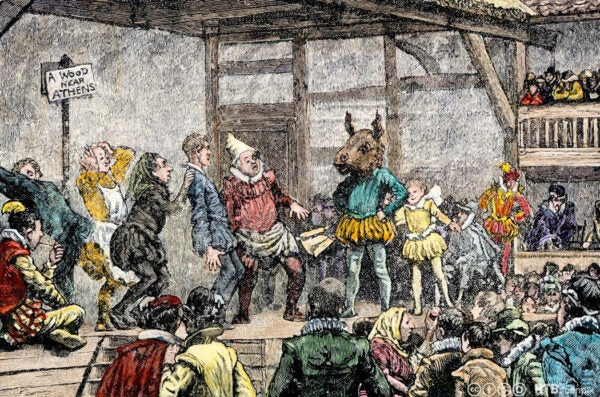Hieronymus Bosch died five hundred years ago, in August of 1516. His adopted hometown, ‘S-Hertogenbosch in the Netherlands (locals call it simply “Den Bosch”), is partying in celebration, and a new documentary directed by Pieter Van Huystee, Hieronymus Bosch: Touched By The Devil, explores the painter and his two dozen or so surviving works, as well as the contributions of the ten family members in his studio.
Actually, not all that much is known about Bosch (c. 1450-1516), who was contemporaneous with Leonardo Da Vinci (1452-1519). However, many are familiar with Bosch’s visions of heaven and, especially, hell—striking images even half a millennium later.
A bird-headed blue biped wearing a caldron as it chews a naked man whose rear-end emits black birds is a typical detail, if anything in Bosch can be said to be typical. His dense compositions of bizarre monstrosities and chimeras mocking and torturing cowering humans are busy with so much symbolism that people have been trying to figure out what it all means ever since they were painted.
Walter S. Gibson, for instance, looks carefully at the central panel of The Garden of Earthy Delights triptych, in which giant strawberries are being devoured by human figures. This garden, which is portrayed on the left panel of the triptych, is no Eden. Quite the contrary: earthly delights like strawberries were a “powerful symbol of the ephemeral nature of earthy pleasures and ambitions.” They may taste great, but the indigestion of eternal damnation never ends.
Tracing the strawberry’s conflicting meanings from Ovid and Virgil, Gibson notes that the humble red fruit could represent the Virgin Mary as well Venus, figures not known to coexist amicably. And the fruit and its leaves were believed to conceal snakes… making strawberries a symbol of hypocrisy and “death concealed beneath a smiling appearance.”
For Gibson, The Garden of Earthly Delights is a deceitful place, an “illusion whose alluring forms conceal death and damnation.” These strawberries are likely to bite back. Hell, after all, is detailed on the right panel of this triptych.
Gibson’s is just one interpretation, of course, amid many. Bosch’s weird and grotesque images continue to hold us in a spell of attraction and repulsion as we try to decipher a long vanished world profoundly different from our own. Quite impressive, five hundred years on.







